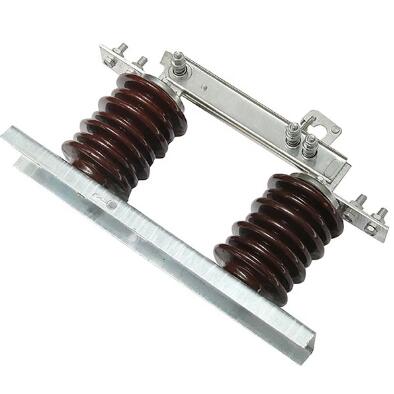Unveiling the Distinctions: Single Phase Disconnecting Porcelain Isolate Switch vs. Other Disconnect Switches
2023-12-26
Introduction:
In the realm of electrical engineering, disconnect switches play a pivotal role in ensuring the safety and efficiency of power systems. Among the diverse array of disconnect switches, the Single Phase Disconnecting Porcelain Isolate Switch stands out for its unique features and applications. In this blog, we will explore how this specialized switch differs from other types of disconnect switches, shedding light on the distinctive characteristics that set it apart.
Understanding Disconnect Switches:
Disconnect switches, also known as isolators, are devices designed to provide a physical break in an electrical circuit. They serve several crucial functions, including isolating equipment for maintenance, ensuring safety during repairs, and safeguarding against electrical faults. While various disconnect switches exist, each type is tailored to specific applications and operational requirements.
Differentiating Single Phase Disconnecting Porcelain Isolate Switch:
1. Material Composition:
One of the distinctive features of the Single Phase Disconnecting Porcelain Isolate Switch is its construction material. Unlike some disconnect switches that may use metals or polymers, this switch employs porcelain as the primary material for its enclosure. Porcelain offers exceptional insulation properties, making it an ideal choice for ensuring the safety and reliability of the switch in diverse environments.
2. Single-Phase Operation:
As implied by its name, the Single Phase Disconnecting Porcelain Isolate Switch is designed specifically for single-phase electrical circuits. This specialization makes it more targeted and efficient for applications where a single-phase disconnection is required, eliminating unnecessary complexity in design.
3. Isolation Mechanism:
The mechanism for isolation in the Single Phase Disconnecting Porcelain Isolate Switch differs from some other disconnect switches. Its design often involves a rotating or sliding mechanism that physically separates the contacts, providing a reliable and controlled means of disconnecting power.
4. Enclosure Types:
Disconnect switches come in various enclosure types to suit different environmental conditions. While some disconnect switches may have metal or polymer enclosures, the Single Phase Disconnecting Porcelain Isolate Switch typically features a robust porcelain enclosure, offering high resistance to environmental factors such as moisture and contaminants.
5. Application Specificity:
The Single Phase Disconnecting Porcelain Isolate Switch is tailored for specific applications requiring the disconnection of single-phase circuits. This focused design makes it an optimal choice for scenarios where precision and efficiency in single-phase isolation are paramount.
Conclusion:
In summary, the Single Phase Disconnecting Porcelain Isolate Switch distinguishes itself from other disconnect switches through its material composition, single-phase operation, isolation mechanism, enclosure types, and application specificity. Understanding these differences is crucial for electrical engineers, maintenance personnel, and professionals working in industries where precision and reliability are key considerations. As technology advances, these distinctions continue to shape the landscape of disconnect switches, contributing to the diverse range of options available for various electrical systems and applications.



